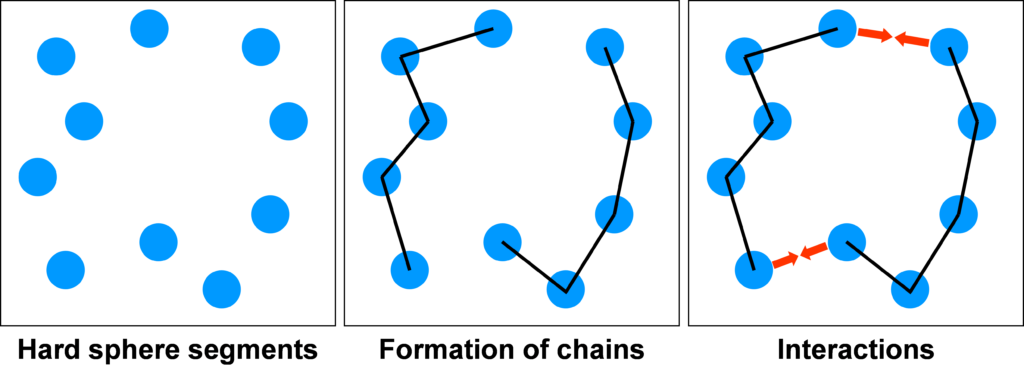PC-SAFT equation of state
Sorption equilibrium data are not always available for the desired conditions and sorption experiments are time consuming. It is thus convenient to be able to predict the sorption equilibria. There exist a large number of equations of state (EOS) available for predicting the phase behavior of chemical systems. If polymer systems are considered, advanced EOS must be employed. In our laboratory, we use one of the state of the art EOS frequently utilized for polymer systems, the perturbed-chain statistical associating fluid theory EOS (PC-SAFT), which was introduced by Gross and Sadowski (2001).
PC-SAFT is a molecular-based EOS, which accounts for the effects of molecular size, molecular shape, dispersion forces and association of molecules. It is based on introducing a well defined model fluid as a reference system and then modeling a real fluid by adding perturbations to the reference system. The model fluid used in PC-SAFT is a mixture of equal size spherical segments (hard spheres), which may be bonded with covalent bonds to form chains. The segments can also exhibit polar interactions or be bonded with hydrogen bonds (association). Such a reference system is called a hard chain reference system (Figure 1). This reference system is a strong advantage of PC-SAFT, as it explicitly accounts for the chain-like nature of polymer molecules.

Figure 1: Hard-chain reference system considered in the PC-SAFT model.
